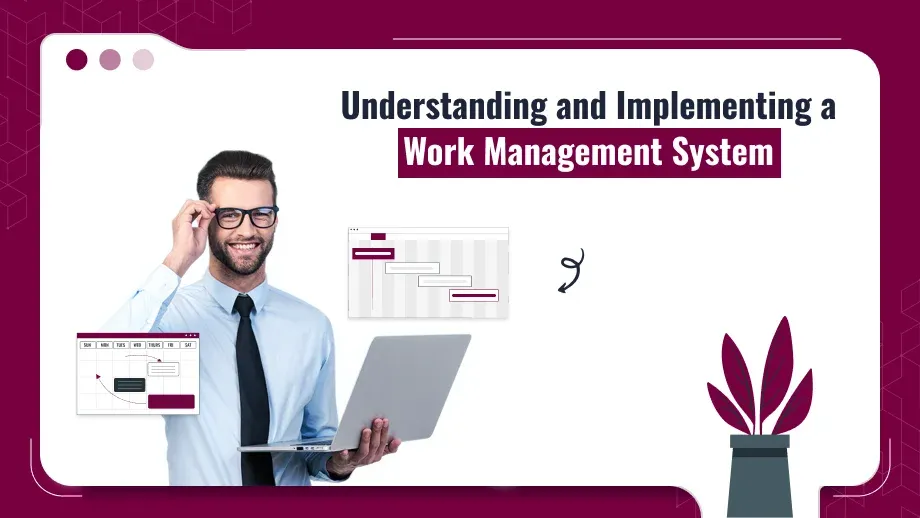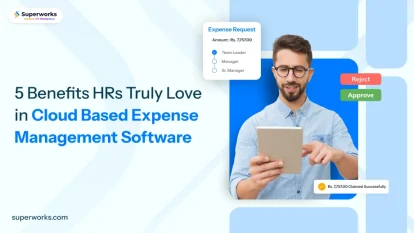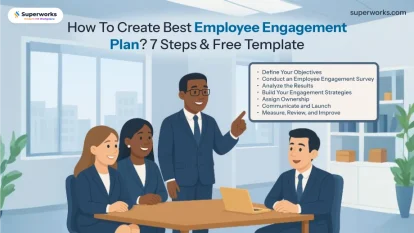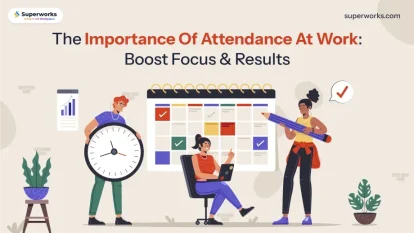
What is a Work Management System?
A work management system is a system that helps organizations to streamline, organize, and track work across multiple brigades and departments. By furnishing a single structure for tasks, coffers, and deadlines these systems ameliorate platoon collaboration and individual productivity. This tool brings together how tasks are assigned, covered, and completed so everyone in an association is on the same runner.
Work management systems are designed to break the functional problems that businesses face, such as miscommunication, task load, and lack of visibility into project progress. In short, they keep teams aligned with organizational pretensions, so work is more effective.
Work Management vs Worker Management Systems
It’s worth clarifying the difference between a work management system and a worker management system. They sound analogous but they focus on different parts of the business. A worker management system refers to the tools or software used to manage Free HR Management Software India related conditioning like scheduling, payroll or hand performance shadowing. It’s about the workers – the pool – while work operation is about the tasks and processes these workers need to complete.
A work management system gives you an overview of how work is distributed and completed across an organization. It’s not about managing workers per se; it’s about managing the inflow of work and getting systems and tasks done. When both systems are in place you can balance resource management( people) and task management( work) for maximum productivity.
Why You Need a Work Management System
In today’s fast-paced business world associations need to be nimble and effective. A work operation system gives you the tools to do that. Let’s get started:
Streamlined Communication and Collaboration
One of the biggest challenges businesses face is getting brigades to communicate effectively, especially in remote or hybrid work environments. A working management system centralizes communication with chat functions, file sharing, and design updates in one place. This reduces the need for long dispatch vestments and makes collaboration faster.
Accountability and Transparency
One of the benefits of having a work management system is the clarity it brings to team places and responsibilities. Each task is easily assigned, deadlines are set and progress can be tracked in real-time. This translucency eliminates confusion and holds team members responsible, so productivity increases.
Better Resource Allocation
With a work management process in place, you can optimize how you allocate mortal and material resources. When tasks are assigned in a structured way you can see which team members are overwhelmed and which have capacity. By redistributing tasks accordingly the workload can be balanced and help collapse and inefficiency.
Real Time Reporting and Data-Driven Decision Making
A good work management system has reporting features that give directors real-time insights into task progress, Digital HR, team performance, and implicit backups. This data allows leaders to make opinions quickly whether it’s to reallocate resources, adjust deadlines, or modify design compass.
Increased Productivity
When everyone is aligned productivity increases. A working management system allows teams to focus on their core work, free from distractions like gratuitous meetings or hunting down information. The system brings all the tools you need into one place, saves time, and improves focus.
What’s In A Works Management System
To understand the value of a works management system you need to look at its core features. These features are designed to simplify and improve work across the association.
Task Assignment and Management
At the heart of any work management system is task management. This allows directors to produce tasks, assign them to specific individualities or brigades, set deadlines, and prioritize tasks grounded on urgency. With task shadowing in place, everyone knows what they’re responsible for and when it’s due.
Collaboration Tools
In a software workplace seamless collaboration is crucial. These systems have features that allow team members to unite in real- time, share lines, leave commentary and track changes. This is especially important in remote or cold-blooded work environments where platoon members may not be in the same location.
Time Tracking and Scheduling
Effective time operation is critical to project success. works management systems have built in time shadowing tools that allow directors to see how long tasks take to complete and if deadlines are being met. Scheduling features like Gantt maps or Kanban boards help visualize timelines and adjust workflows as needed.
Resource Management
A good work management system allows brigades to cover resource operations. This includes not just human resources but fiscal and material coffers. Having a clear view of available resources helps in making better decisions about how to allocate them.
Project Planning and Reporting
Planning a design becomes much easier with a work management system. The platform has tools for setting mileposts, deadlines and design pretensions. Reporting tools further help by providing detailed insights into design performance, task completion rates and resource usage.
Integration with Other Business Tools
No tool exists in insulation so a good work management system integrates seamlessly with other business tools. Whether it’s your CRM, accounting software or communication HRMS platform to sync data across systems is crucial for a smooth workflow.to sync data across systems is crucial for a smooth workflow.
Customizability
Every association is unique and the stylish work management systems are largely customisable. This means you can acclimate workflows, produce custom fields and modify reporting templates to fit your specific needs.
How to Select the Right Work Management System
Not all work management systems are the same so select one that fits your organization. Here are the key components to consider:
Scalability
As your trade develops your work for management should grow with it. Make sure the system can handle more clients, projects, and information without execution degradation.
User-Friendliness
If a system is as well complex, a group of individuals will battle to utilize it. Select a work management system that’s natural and simple to utilize, minimizing the learning curve.
Integration Capabilities
Ensure your work for management integrates consistently with other tools your organization employments. Whether it’s a bookkeeping program, communication instruments or HR stages integration is key to a smooth workflow.
Mobile Accessibility
In today’s adaptable work situations, the capacity to get to a work administration framework on the go is basic. See for frameworks that have portable apps so workers can remain profitable whether they’re in the office, working remotely, or on the move.
Security Features
Data security is top HRMS of intellect for any organization. Make sure the system you select has strong security highlights counting information encryption, client consents and secure cloud storage.
Challenges of Implementing a Work Management System
Understanding these challenges and how to overcome them is key to a smooth transition.
- Resistance to Change
One of the greatest challenges organizations confront is resistance from employees when introducing unused instruments. Make beyond any doubt you give comprehensive preparation and communicate the benefits of the framework to guarantee adoption.
- Integration Issues
Integrating a modern work management system with existing tools can be complicated. Plan the integration process carefully and test completely to dodge data silos or miscommunication.
- Initial Setup Time
Setting up a work management system can take time, particularly for larger organizations. While it may be time-devouring at first the long-term benefits distant exceed the setup effort.
- Data Migration
For organizations moving from more seasoned systems information migration can be a challenge. Work with a trusted merchant to guarantee your information is exchanged safely and accurately.
The Work For Management System Of The Future
As the advanced work environment advances work administration frameworks will gotten to be indeed more imperative in keeping groups on track. Farther work is here to remain and with it comes the requirement for instruments that allow for consistent collaboration, communication, and errand management no matter where you are.
AI and automation are starting to shape the work management system of the future. These will offer assistance in anticipating venture bottlenecks, computerizing dreary assignments, and giving experiences to advise choice-making. AI will ended up a standard highlight in work administration apparatuses in the a long time to come and will make us indeed more productive.
Summary
A work management system is no longer a nice to have for organizations it’s a must-have. It gives an organized way of overseeing errands, assets, and communication so groups remain profitable and adjust to organizational objectives. Whether you have remote workforce management or work in a traditional office environment the right work management system can change your workflow.
Choose an arrangement that has assignment management, asset assignment, collaboration apparatuses, and adaptability and you’ll optimize your operations, move forward responsibility, and boost by and large efficiency. To discover out more about streamlining your workforce check out Remote Workforce Management or HRMS platforms that integrate with your work management system.






